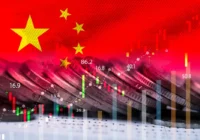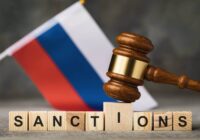After three decades of relative stability since the Cold War, the global landscape has shifted. The unipolar world order that defined geopolitics since the 1990s is crumbling, and a new and dysfunctional system is rising from its rubble. As the new “Axis of Disorder” — China, Russia, North Korea and Iran — contests the status quo amid rising global temperatures, the era of polycrisis is upon us.
A polycrisis is the culmination of a fast-moving local trigger event intersecting with one or more slow-moving global stressors, such as climate change, great power competition, transnational crime or inflation. Polycrises result from the growing complexity of the current geostrategic situation, in which the line between global and local issues is increasingly blurred. As the world becomes more unstable, conflicts generally contained in one country or region are no longer localized, creating higher risks for multinational organizations than businesses realize.
But what does a polycrisis look like? Following Hamas’s surprise assault on Israel last October, the Houthis in Yemen — over 1,200 miles away — imposed a de facto embargo on Red Sea shipping, shuttering the waterway used to transport goods from Asia to Europe. The strain on global transportation was compounded by the drought that hindered the Panama Canal’s capacity. In short, a local conflict between Hamas in Gaza, a client of Iran, and Israel, a client of the United States, compounded by a climate-related transportation issue, produced an ongoing global shipping crisis; whereby the cost of moving goods from Asia to Europe has precipitously increased. With Iran threatening to shut down the Strait of Hormuz, the world’s most vital energy shipping lane, this prototypical polycrisis will worsen in 2025.
Scanning for polycrises
Global Guardian’s 2025 Global Risk Map Geostrategic Stress Index (GSI) gives a low to extreme categorical risk rating that indicates a country’s susceptibility to foreign destabilization and highlights the critical fault lines where geopolitical tensions are expected to spill over. Destabilization can take many forms. A foreign actor can interfere in elections or exacerbate domestic tensions via influence campaigns. A country locked in a frozen conflict could have the conflict thawed by precipitating action from an outside power. Mercantilism could fuel active conflicts, like in the Democratic Republic of Congo. Conflicts could also be intensified by the direct involvement of a foreign paramilitary, as is the case in Burkina Faso and Niger. Or a conflict could become a proxy war, as demonstrated in the spillover of the Russo-Ukrainian war into Syria, Mali and Sudan.
Using the GSI, business leaders can extract several vital insights. Latin America presents several risk factors that should serve as warnings to businesses. Russia, China and Iran are actively working alongside Hezbollah to diminish Western influence by expanding their espionage presence and military efforts in Venezuela and Cuba while increasing ties to drug cartels. The region’s abundant natural resources provide the incentive and means of foreign destabilization. Finally, many countries in the region — such as Peru, Bolivia, Chile and Ecuador — have a combination of weak government institutions and strong civil societies, making disruptive political events more likely.
In the Asia-Pacific, China is ramping up its “salami-slicing” campaign in the Taiwan Strait and South China Sea. Central Asia faces high destabilization risks as it is squeezed between Russia and China, along with American and European efforts to counter their influence. Economic shocks in the region could quickly trigger unrest, as seen in Kazakhstan in 2022. Southeast Asia’s internal conflicts in Myanmar and other political crises threaten to destabilize the region. Business leaders should expect the Pacific Islands to face increasing destabilization as the US and Australia compete with China over hearts, minds — and security agreements.
In the Middle East and North Africa, the Israel-Palestine conflict remains a central source of instability. The region is expected to remain unstable with many middle powers — including Iran, Israel, and Türkiye — fragile states and their centrality to energy markets. Sub-Saharan Africa is emblematic of the age of the polycrisis. Health epidemics, insurgent jihadism, and climate change have combined to create persistent challenges. These are exacerbated by the inability of major powers to cooperate. The region has also become a proxy battleground for the Russia-Ukraine war, with both countries providing military support to opposing sides of several conflicts.
In addition to the geopolitical fault line dividing Russia (and Belarus) and its European neighbors, ethnic tensions in the Balkans are of particular concern in Europe over the next five years. Geographically and culturally situated between Russia and NATO, the Balkans are a friction point and future flashpoint that threatens to draw Serbia (and Russia) into direct conflict with NATO in Kosovo.
Planning for polycrises
In the age of the polycrisis, businesses operating in these areas must be clear-eyed and intentional about their long-term plans. Stability is never a given, but these five regions have shown numerous indications of rising conflict that would affect their regions and the global economy more broadly. Businesses should protect their personnel and assets by heeding the early warning signs in Global Guardian’s 2025 Risk map and planning around potential crises in the coming decade.
Simply put, the business world is built around assumptions that are no longer true in today’s geopolitical landscape. Companies may promise shareholders a certain amount of growth per year based on familiar models — only to be forced to shut down shops throughout a region that is now a war zone or to find their manufacturing costs rocketing due to constricted supplies. Old models developed during a stable, unipolar geopolitical environment no longer apply to today’s multipolar, polycrisis-riddled world.
Corporate executives and decision-makers must adapt to this new reality. Planning for conflicts to disrupt the global market requires reshaping business models to include significant buffers in supply chains and growth expectations. This allows businesses to adjust to new geopolitical conflicts as they emerge.
Formerly localized domestic disputes and tensions now have profound implications for the rest of the globe. The Middle East is an impossible-to-ignore example of a polycrisis that has shaken global markets — a pattern that will continue in other regions. Businesses must accept this reality and adjust their models and long-term planning to ensure they can still reach their financial goals while protecting their personnel. The era of post-Cold War stability is over; in its stead, there are a host of simmering geopolitical tensions that could suddenly erupt and undermine international business. Change isn’t coming — it’s here.
[Liam Roman edited this piece.]
The views expressed in this article are the author’s own and do not necessarily reflect Fair Observer’s editorial policy.
Support Fair Observer
We rely on your support for our independence, diversity and quality.
For more than 10 years, Fair Observer has been free, fair and independent. No billionaire owns us, no advertisers control us. We are a reader-supported nonprofit. Unlike many other publications, we keep our content free for readers regardless of where they live or whether they can afford to pay. We have no paywalls and no ads.
In the post-truth era of fake news, echo chambers and filter bubbles, we publish a plurality of perspectives from around the world. Anyone can publish with us, but everyone goes through a rigorous editorial process. So, you get fact-checked, well-reasoned content instead of noise.
We publish 2,500+ voices from 90+ countries. We also conduct education and training programs
on subjects ranging from digital media and journalism to writing and critical thinking. This
doesn’t come cheap. Servers, editors, trainers and web developers cost
money.
Please consider supporting us on a regular basis as a recurring donor or a
sustaining member.
Will you support FO’s journalism?
We rely on your support for our independence, diversity and quality.










Comment